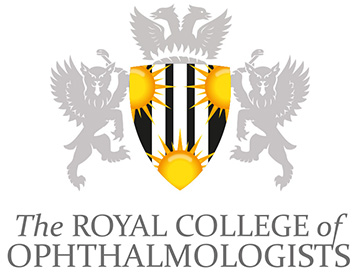Ophthalmologists reduce glaucoma related blindness
10 March 2021
The World Glaucoma Association (WGA) aims to raise awareness of glaucoma through the World Glaucoma Week (7th-13th March).
This year’s theme is The world is bright, save your sight! It reflects the hope that, with regular testing and access to treatment, people continue to see the world and continue to enjoy its beauty, charm, and adventure.
Ophthalmologists are leading the way in reducing glaucoma related blindness. Find out more about how ophthalmic research, guidelines and training is contributing to creating a brighter world for those with glaucoma.
Bernie Chang, president of the college, reflected on the important work in this area:
“Ophthalmologists play an important role in reducing glaucoma related blindness. Initiatives to improve early detection of glaucoma will help preserve eyesight globally. Our training and guidance is vital for those providing ophthalmic care, enabling them to save sight and allow more people to see the beauty in the world around them.”
Glaucoma, Isolation and Kindness
Professor Peter Shah (BSc (Hons), MB ChB, FRCOphth, FRCP Edin, MA (Distinction), Consultant Ophthalmic Surgeon, University Hospitals Birmingham (UHB) NHS Foundation Trust, Birmingham Institute for Glaucoma Research, Institute of Translational Medicine, UHB. Visiting Professor at University College London, Honorary Professor of Glaucoma, Centre for Health & Social Care Improvement, University of Wolverhampton and President of the UK and Eire Glaucoma Societ to reflect on this year’s theme: The world is bright, save your sight!
He highlights the need for ophthalmologists to recognise the impact of the demand-capacity mismatch in delivering care, support patients with the emotional impact of glaucoma and to put people at the heart of service reconfiguration.
Ophthalmic Research
Special issues 2020: Eye Journal’s special issue this year included papers on Glaucoma. Read the special issue here.
Studies focused on how ocular imaging can support Ophthalmologists in providing high quality glaucoma care. These include:
- Deep learning in glaucoma with optical coherence tomography: a review
- Aqueous humour outflow imaging: seeing is believing
- Aqueous outflow imaging techniques and what they tell us about intraocular pressure regulation
- Mean amplitude of intraocular pressure excursions: a new assessment parameter for 24-h pressure fluctuations in glaucoma patients
- Ocular imaging at the cutting-edge
Watch the ‘Aqueous humour outflow imaging: seeing is believing’ video.
Special issue 2019: Much progress has been made to improve health outcomes in people with glaucoma but it is humbling to reflect on the burden of glaucoma, still a leading cause of blindness in the developed world and much of it preventable. Find out more about the achievements of VISION 2020 and exciting developments both in translational and clinical research.
Read the Special issue on Glaucoma here.
Special mention: Do topical ocular antihypertensives affect Dacryocystorhinostomy outcomes: The Coventry experience assessed the impact of topical ocular antihypertensive treatment on surgical outcomes following endoscopic and external dacryocystorhinostomy surgery.
This paper was highlighted as part of our coverage on IWD. Read other fantastic papers by lead female authors here.
Ophthalmic Service Guidance on Glaucoma
Our guidance supports high quality eye healthcare. We have developed the following Risk Stratification Tool and our Glaucoma Management Plans during the Recovery Phase of COVID-19.
Glaucoma Management Plans during the Recovery Phase of COVID-19
This guidance has been developed by the RCOphth COVID-19 Review Team and UKEGS in response to the pandemic and may be subject to change.
The guidance provides pragmatic advice on recommencing care for glaucoma patients based on clinical expertise from a variety of clinical settings around the UK. The scope of this document is to provide advice for the ‘recovery phase’ rather than the acute lockdown phase. Some of the points will be germane to longer term ‘post COVID-19’ services.
Read the Glaucoma Management Plans during the Recovery Phase of COVID-19 guidance.
RCOphth and UKEGS Glaucoma Risk Stratification Tool
The purpose of identifying, treating and monitoring glaucoma is to preserve a sighted lifetime.
In the face of high demand and unmet need due to insufficient capacity, and the consequent risk of avoidable blindness from delays in glaucoma care, an agreed mechanism for identification of people at highest risk of sight loss is desirable.
The document describes a clinical tool for classification of patients with glaucoma into strata of risk for significant future sight loss and an estimate of resource requirement for managing the patient.
The tool was developed collaboratively between the RCOphth and UKEGS and acknowledges diagnosis, stage of disease, complexity of disease, rate of disease progression, life expectancy, ocular and systemic comorbidities, dependency and socio-economic deprivation.
Read the RCOphth and UKEGS Glaucoma Risk Stratification Tool
Glaucoma and Surgical Training
In August 2020 John Ferris filmed a webinar on glaucoma surgery and surgery training. Simulation training benefits both established ophthalmologists and doctors in training.
Watch the glaucoma surgery and surgery webinar here.
We asked John to reflect on the role of surgical training has on combating Glaucoma:
“Glaucoma is the 3rd most common cause of visual impairment globally. In many parts of the world surgery is the only effective treatment, but there is a shortage of ophthalmologists who have been trained to perform glaucoma surgery. There is now randomised control trial level evidence that simulation training dramatically enhances the speed and safety of glaucoma surgical training. This RCOphth webinar demonstrates how to use model eye simulation to teach trabeculectomy, tube surgery and MIGS surgery. We hope that more widespread adoption of these techniques will lead to more glaucoma surgeons being trained and that this will eventually reduce the burden of glaucoma related blindness.”
